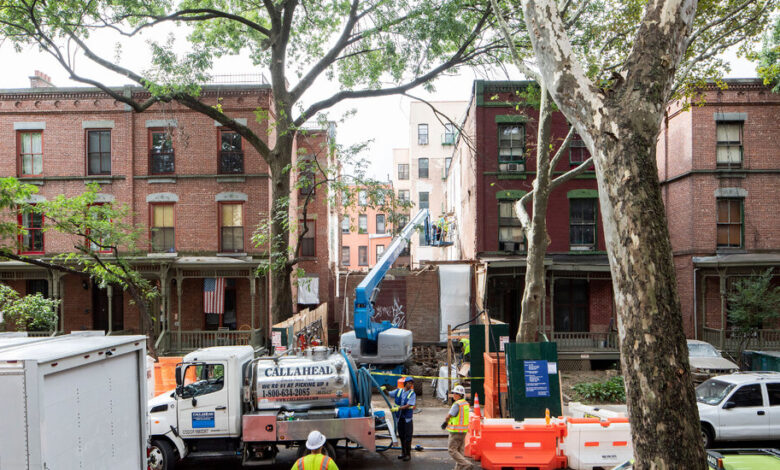Another Landmark Lost, This Time on Astor Row in Harlem

[ad_1]
A History of Astor Row in Harlem
1844 The block of West 130th Street between Fifth and Lenox Avenues in Harlem is bought for $10,000 by the shrewd real estate investor John Jacob Astor.
1880-1883 Amid a building boom in Harlem, Astor Row, 14 pairs of three-story brick homes with Victorian-style wooden porches, is built at Nos. 8 to 62 West 130th on land owned by an Astor heir. The architect is Charles Buek.
1920 James Cruikshank, an investor, buys 20 houses on Astor Row — all previously owned by middle-class and upper-middle-class whites — and begins selling them to Black buyers, prompting The New York Times to predict that the row would soon be occupied entirely by African Americans.
1977 New York City seizes 28 West 130th Street for nonpayment of taxes.
1981 The row’s 28 houses are designated as individual city landmarks. Although No. 28 is vacant and sealed with concrete blocks, the landmark designation report describes it as “a vital component of the unique group of buildings known as Astor Row.”
1986 No. 28 is bought at auction for $27,999 by Nina Justiniano, a nurse, and her mother, Willie Stevenson. The house has a hole in the roof and dangerous, caved-in floors.
1992 The philanthropist Brooke Astor arranges for a $1.7 million donation from the Vincent Astor Foundation to the New York Landmarks Conservancy to restore and replace the decaying porches of Astor Row. The conservancy ultimately oversees $3.1 million of restoration work on the row. No. 28, deemed in need of too much work, is not among the houses that receive help.
2013 The chairman of the New York City Landmarks Preservation Commission orders Ms. Justiniano to repair No. 28.
2015 The city sues Ms. Justiniano to try to force her to fix her house, whose walls and floors have collapsed and whose roof has largely fallen in. A judge orders her to make repairs.
2019 Ms. Justiniano is held in contempt of court for not complying with court orders to bring her home into good repair.
Spring 2021 No. 28 is placed on the market. Offers come in from multiple buyers, as they have for years, but no deal ever closes.
June 29, 2021 Buildings Department engineers determine that elements of No. 28 have collapsed and that the building is structurally unstable. An emergency demolition order is issued.
July 2021 With Buildings Department approval, Ms. Justiniano and Martin Malek, a professional engineer whose wife has sought to buy the house, initiate a plan to stabilize the house and make the site safe.
August 2021 After negotiations between Mr. Malek and Ms. Justiniano fail, Mr. Malek ceases work. The Buildings Department finds that the house is still in danger of collapse and issues a new demolition order.
September to October 2021 City demolition contractors raze the 138-year-old house, leaving behind a gaptoothed streetscape.
[ad_2]
Source link






